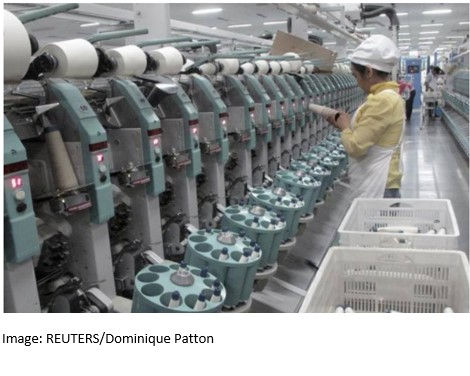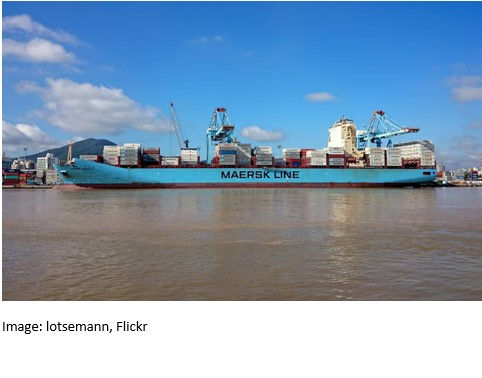Snippets for 17 February 2022
- CarbonEES
- Feb 16, 2022
- 5 min read
Updated: Mar 17, 2022

Welcome, once again, to our fortnightly newsletter.
In this edition of Snippets, we continue with a theme we touched on last time – “Net-Zero” transitioning. It has to happen, and will likely be disorderly, but this transitioning needs to be embraced, and urgently, by governments, businesses and individuals. All must try to see a disorderly and disruptive transition as an opportunity.
The US Army is embracing transitioning, recently releasing their strategy around this. And the building sector is too, with a transition to less polluting products in some areas, and more focus on sustainability, to meet expectations of businesses employees and investors. The fashion industry is also transitioning in their own way, with data now available to help consumers with transparency around clothing production conditions; and there is a new term in the farming sector – silvopasture, where growing crops, trees and livestock on the same land is explained– another good way of that sector transitioning to net zero. The shipping industry is being forced to make moves to transition, by the EU new rules about carbon taxes.
We have a very good explainer about the differences between the many types of Hydrogen you may have heard about. Green, blue, grey, purple, white… what does it all mean? There are some big opportunities available. Toyota is looking at the opportunities available to them with transitioning to hydrogen technology too, inside and outside the automotive industry, using renewables in the Taranaki to get this going. And others are also working on hydrogen opportunities in NZ.
But electric cars are still going to be big. The growth in this area has been huge to date. Discussion in this article around the environmental costs of production of these electric vehicles indicates they are still likely to be better for the environment overall.
Our final article shows just what can be done in the way of innovative design of buildings … functional, attractive, and resource friendly. Inspiring!
Perfect is the enemy of good – or rather of progress – according to our first article. As governments scramble to enact policies to meet their net-zero targets, it becomes clear the various levers available to governments to bring about decarbonisation will not necessarily result in a smooth transition. Industrial revolutions rarely are. Governments are better off taking action sooner, as the longer we wait, the more disorderly the transition will be. Action early will help businesses adapt to increasing restrictions over time, aiding in smoothing the net-zero transition. Read more....
They may not be top of mind when we think about big polluters, but the US Army has a carbon footprint larger than 140 of the world’s nations. If we are to have any chance of avoiding the worst effects of climate change, the US Army will need to “get with the programme”. Luckily, the Biden administration has introduced goals and actions the US Army can take to reduce its carbon footprint. This includes a target of 50% reduction in emissions for the Army, by 2030. Read more....
Google is embracing sustainable building design with its new Bay View campus building that implements “dragonscale” solar panels on its roof. The panels are able to provide 40% of the electricity needs of the campus. Sustainable buildings are not only being driven by climate goals, but also by recruitment strategies, as Gen-Z workers are much more likely to work for a company that embodies their climate conscious values. What’s more, sustainable buildings are better, more enjoyable spaces to be in. Read more....
With the fashion industry accounting for up to 8% of global GHG emissions, fashion brands are seeking to transition towards more sustainable sources of materials, mainly as a result of consumers demanding more transparency about where their clothes are produced and under what conditions. In partnership with the WWF, fashion label Stella McCartney and The Textile Exchange, Google has developed the Impact Fibre Explorer, a tool that it says will enable companies to identify the biggest risks associated with more than 20 fibre types in their supply chains, including synthetics. Read more....
Transition is also occurring in the farming sector. Growing crops, trees and livestock on the same land could help farmers battle climate change. This technique, known as silvopasture, creates a sink to collect carbon responsible for global warming. It also battles erosion and improves soil. Silvopasture manages forages, forests and livestock on the same land. It draws carbon dioxide from the atmosphere and puts it back into the soil, so there are negative emissions, and grows more biomass per acre in a silvopasture than a treeless pasture or in woods. Read more....
With shipping emitting around one billion tonnes of greenhouse gases, or 3% of global emissions every year, shipping would be the sixth-largest polluter in the world if it were a country. The EU has decided that as part of its 2030 goal of reducing emissions by at least 55 per cent, shipowners from 2023 will have to buy carbon allowances to cover all emissions during voyages in the EU and half of those generated by international voyages that start or finish at an EU port. A global precedence is being set. Read more....
As interest in hydrogen, as a viable energy source, increases, we look at the different types that are currently available. We know green is currently the best long-term option, but what about pink (nuclear), white (naturally occurring), yellow (from solar). Also blue, which relies on carbon capture, and of course grey/black, the dirty incumbent, which shouldn’t be considered, not even as a short-term option. Read more....
Staying with hydrogen, Toyota sees a strong future for this fuel type. Toyota NZ is looking at a range of commercial partnerships, not just cars. New Zealand is ideal for hydrogen adoption, testing and production, in particular green hydrogen, the cleanest way to create and store hydrogen. But this article is more than just about Toyota; companies like Hiringa Energy are installing electrolysers to create green hydrogen in NZ, which basically means hydrogen is created without any environmental impact. Hyundai also sees hydrogen as a key fuel in heavy transport. Read more....
Vehicles already use a variety of different fuel/energy types and next we look at the drive for greener EV’s. While it took almost 20 years since the first mass-market models to put a million battery-powered vehicles on the road, it took just five more years for the figure to cross 10 million in 2020. There are some issues, in the production of these vehicles, that need to be addressed to green the manufacturing process. Whether this be from better battery tech or improved manufacturing processes, all companies need to step up. Read more....
We finish up with a look at an award winning building in rural Bangladesh. The hospital, built with a budget of just $2 million, is built around rainwater harvesting. As well as collecting water in two large tanks, a canal zigzags through the complex, also helping to keep temperature down in the heat of summer. In an area where rising sea levels have had an impact, causing the groundwater to become too saline, it’s important that as much rainwater is captured as possible. We think this build is fantastic! Read more....

This week we have couple of interesting innovative ideas we hope you enjoy:
Copyright of all featured articles lies with the original authors






























Comments